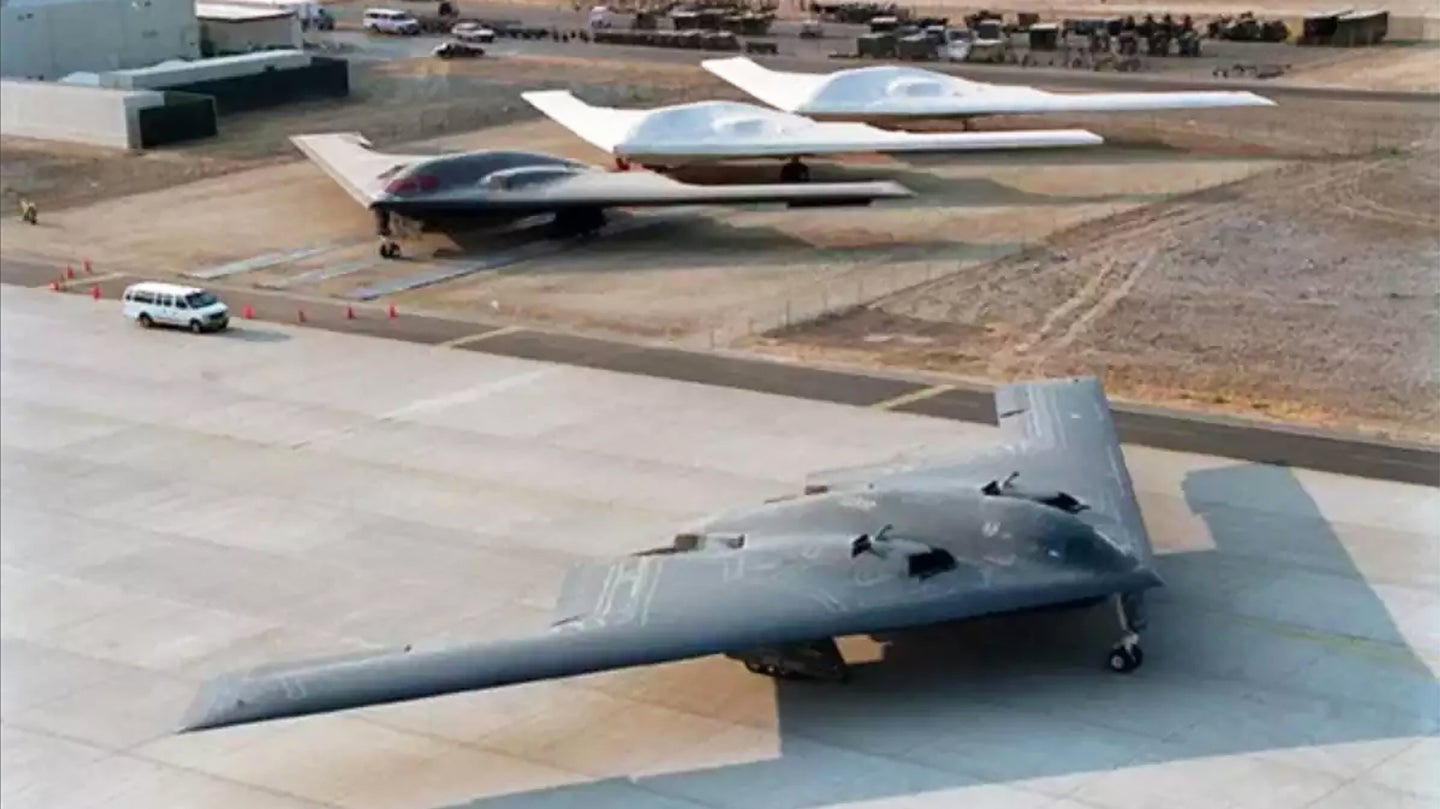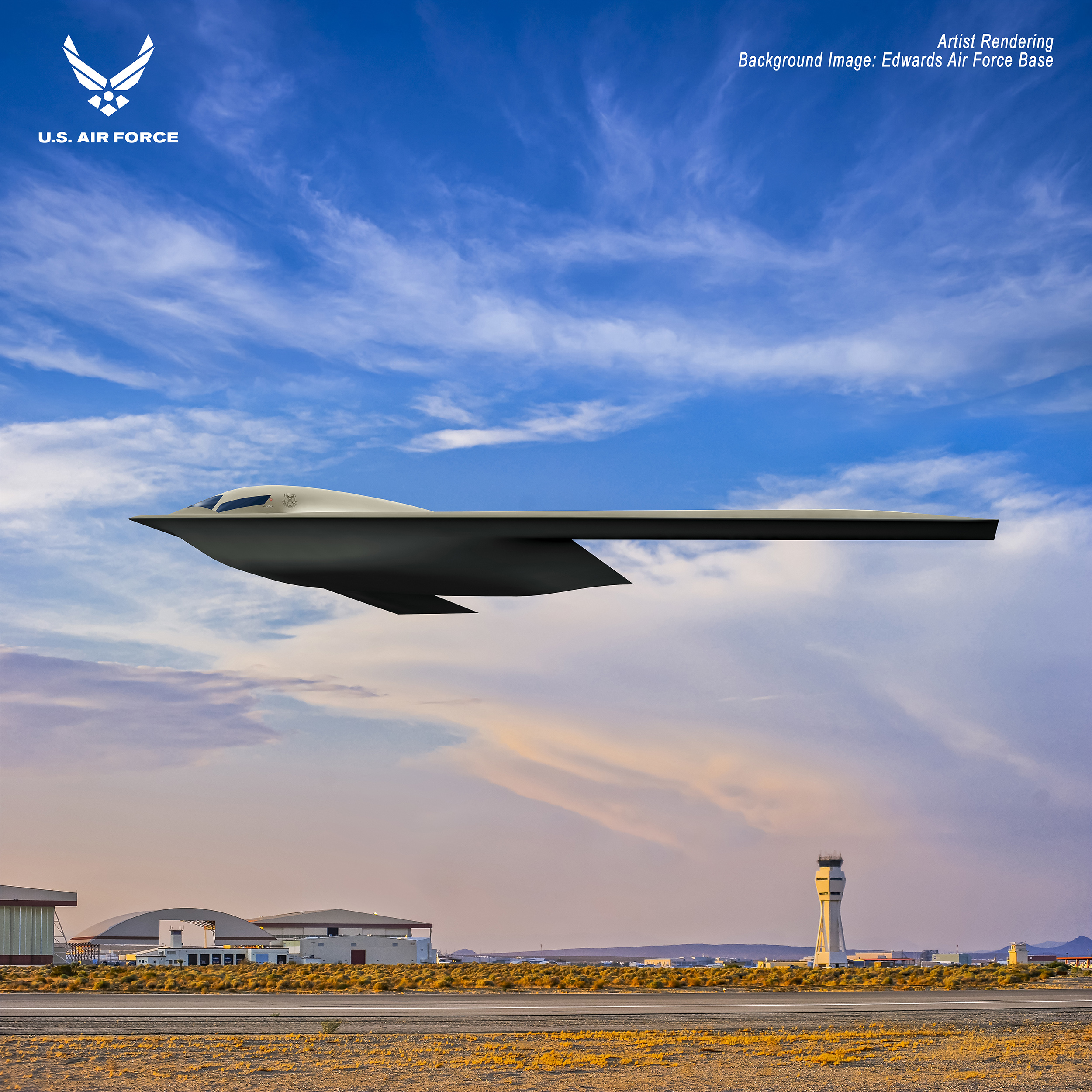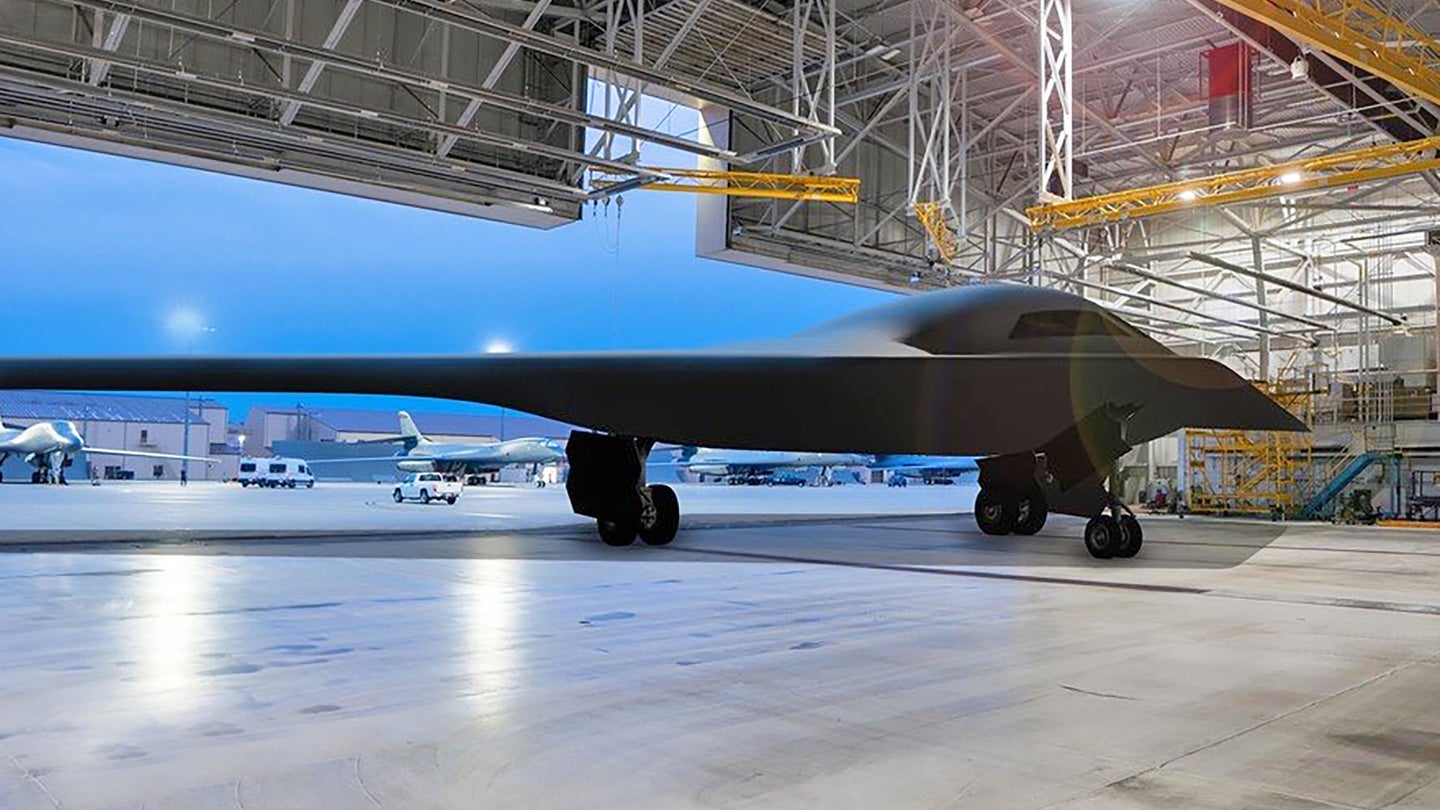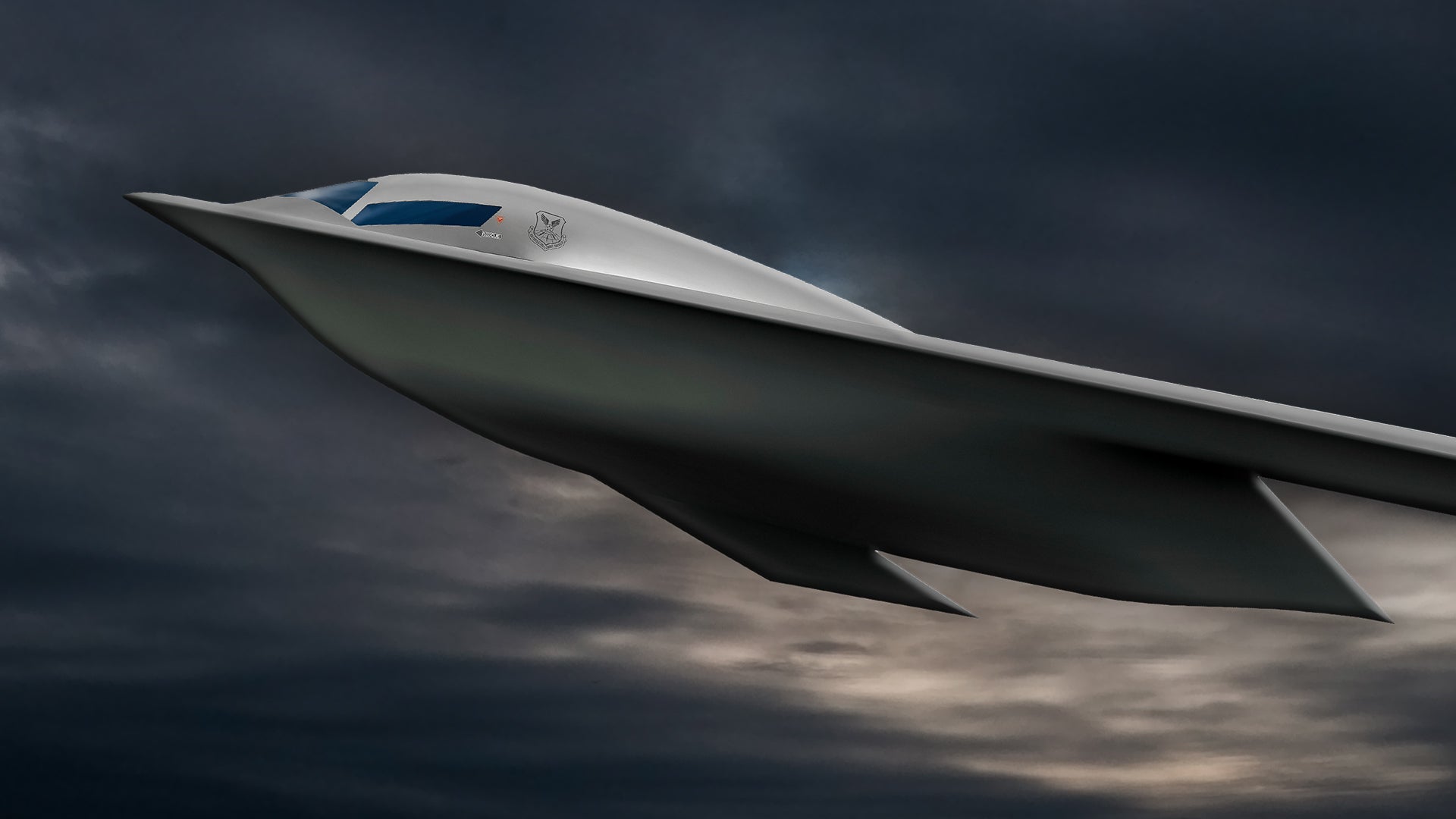The U.S. Air Force now has no fewer than five examples of its secretive Northrop Grumman B-21 Raider stealth bomber in a process of final assembly. That’s three more airframes than we knew about before today and further indication that the new flying-wing bomber is making significant progress, albeit well away from the public gaze.
Speaking today during the Air Force Association’s Air, Space, & Cyber Conference, Secretary of the Air Force Frank Kendall confirmed that five Raiders were now taking shape at Air Force Plant 42 in Palmdale, California. These aircraft are part of the Engineering and Manufacturing Development (EMD) batch, funded under the Long-Range Strike-Bomber (LRS-B) contract.
We still do not known exactly how many aircraft the USAF expects to receive as part of the EMD phase of the program, a validation period that occurs before full rate production, but this is the most information about this particular aspect that has been released to date. The Air Force eventually hopes to take delivery of nearly 150 of the new stealth bombers. The program is said to be on budget and relatively close to being on schedule, overall. Six aircraft were also built during a similar phase of the B-2 Advanced Technology Bomber program, and these planes ended up being a major portion of the tiny fleet of 21 that ended up being built. There were additional ground test articles, as well.

Details about the B-21 program in general have been notoriously scarce and, on occasions, there has been some confusion as to the exact status of the aircraft on the assembly line. In the meantime, the countdown to the first flight of a B-21 is very much on, although the planned date for this has slipped from December of this year, with a rollout of the aircraft now expected in early 2022, according to officials. If that timeline is kept, then a first Raider would likely take to the air in the late spring or early summer of the same year.
As expectation grows, the Air Force has fed observers with only meager tidbits, providing an idea of how the B-21 is likely to look. But these, too, have been somewhat cryptic. Most recently, a rendering released in July— only the third from official channels — revealed a previously unseen and unusual-looking cockpit windscreen configuration. What is more, there is no guarantee that the aircraft will accurately resemble the few renderings we have seen so far.

Regardless, a sprawling facility at Edwards Air Force Base in California awaits the bomber’s testing program, which will be run by the already stood-up B-21 Combined Test Force. Long-term, the USAF expects the B-21 to enter service at Ellsworth Air Force Base in South Dakota, sometime in the mid-2020s, followed by Whiteman Air Force Base in Missouri and Dyess Air Force Base in Texas.
Officials have described the new stealth bomber as being key to the Pentagon’s nuclear modernization program, itself a “top priority for the Department of Defense and the Air Force,” according to Randall Walden, the director of the Air Force Rapid Capabilities Office.
Of course, the B-21 will be more than just a bomber. It will eventually be an optionally manned, nuclear-capable, multi-role strike and intelligence, surveillance, and reconnaissance (ISR) platform that will enable other platforms, as well as be enabled by other platforms, as part of a family of advanced systems. Beyond knowing that it will be a high-flying design that traces its roots to the B-2’s early development, it will possess broadband low-observability (next-generation stealth technology), and it will be smaller than its B-2 progenitor, specifics remain very limited. One thing that is apparent is that it will leverage many mature subsystems and sensors that are either in production or already or have had major risk-reduction work done on them. Overall it will be much more flexible and adaptable than the B-2, as well.

In other words, this should be an incredibly remarkable weapon system. Yet for some, being able to survive in enemy airspace won’t be what impresses them the most about it; developing it on budget and on schedule and producing it in large numbers will.
Of course, the verdict on how all that will play out remains up in the air, but so far every indication seems positive.
Contact the authors: Tyler@thedrive.com and Thomas@thedrive.com
